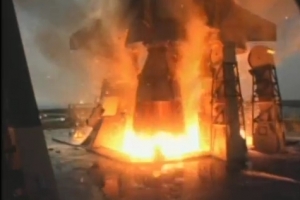[fototag id=”Angara7Launch”]
Illustration by Adrian Mann
In the 1980s the Soviet Union designed and built a heavy-lift rocket known as Energia that was comparable to the Space Shuttle, and even the Saturn V, in its lifting capability of 100,000kg (220,000 pounds). It successfully launched the unmanned Soviet Buran shuttle, but was retired not long after.
Since then Russia has rarely delved into the world of super launches. Their biggest rocket currently in operation is the Proton, capable of taking 21,600kg (48,000 lbs) into orbit. That’s quite sizeable in the realm of modern rockets, but it doesn’t come close to the eventual power of NASA’s Space Launch System, which will fly for the first time in 2017.
So for the last few years the Russian space agency, Roscosmos, has been drawing up ideas for a mega rocket called the Angara 7. It’s still in a concept stage, but Roscosmos is very much aware of a need for a heavy-lift launcher if they are to carry out their stated goals of taking humans to the Moon.

The rocket currently being touted, which is illustrated above, would be capable of taking at least 35 tons into orbit, although it’s likely this would be upgraded to make a lunar mission possible. Russia has a strong history in the launcher industry with its Proton, Progress and Soyuz rockets being incredibly successful for the past few decades. The Angara 7 could be the rocket Roscosmos needs to begin manned exploration beyond Earth orbit.
 Space Exploration
Space Exploration

 Space Exploration
Space Exploration